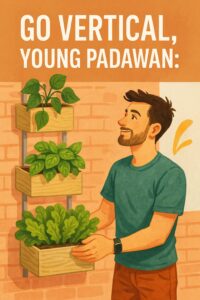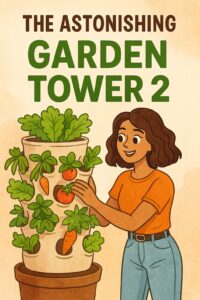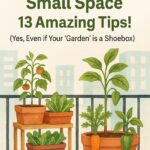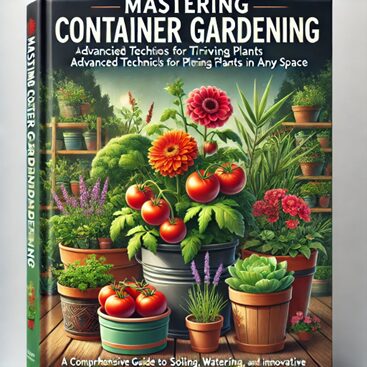Grow Vegetables Small Space: 13 Amazing Tips!
Affiliate Disclaimer
This post contains affiliate links. If you purchase through these links, I may earn a small commission at no additional cost to you. This helps support the creation of more helpful content. Thank you for your support!
Discover the Power of Container Gardening
Yes, Even if Your “Garden” is a Shoebox
So, you’re dreaming of crisp, homegrown lettuce, juicy tomatoes, and the smug satisfaction of telling dinner guests, “Oh, this? I grew it myself.” But there’s a tiny, shoebox-sized problem: your “outdoor space” is less sprawling estate and more… well, a suggestion of a balcony. Fear not, intrepid urban farmer! Learning how to grow vegetables in very small space isn’t just possible; it’s an adventure in edible engineering.
In This Article
- Go Vertical, Young Padawan
- Container Crazy is Good Crazy
- Choose Your Champions Wisely
- Sunlight, The Not-So-Secret Ingredient
- Soil Matters (A Lot)
- Water Wisely, Not Wildly
- Feed Your Friends
- Companion Planting: The Buddy System
- Succession Planting for a Continuous Harvest
- Embrace the Window Box
- DIY Self-Watering Containers
- Don’t Be Afraid to Prune
- The Astonishing Garden Tower 2
Forget the back-breaking tilling of yore.
We’re entering an era where knowing how to grow vegetables in very small space is a badge of honor, a testament to your green-thumbed ingenuity. You don’t need acres; you need savvy. And perhaps a willingness to occasionally apologize to your downstairs neighbor for rogue water drainage (we’ll get to that).
Let’s be honest, the desire to learn how to grow vegetables in very small space often stems from a deep-seated need to conquer limitations. Your windowsill is whispering, “I could be more than a dusty ornament graveyard.” Your doorstep is screaming, “Tomatoes, please!” It’s time to listen.
Here Are 13 Amazing Tips To Turn Your Postage-Stamp Plot Into a Veritable Veggie Victory Garden

1. Go Vertical, Young Padawan
When ground space is a myth, look up! Walls, railings, and even sturdy drainpipes are prime real estate. Think hanging baskets, tiered planters, and wall-mounted pockets. Mastering how to grow vegetables in very small space often means thinking in 3D. Tiered planters are like bleachers for your botanical buddies, and wall-mounted pockets can turn a boring, sun-baked wall into a living tapestry of edible greens.

4. Sunlight, The Not-So-Secret Ingredient & 5. Soil Matters (A Lot)
Most veggies are sun-worshippers. Track the light in your tiny domain. Does it get at least 6 hours of direct sun? This will dictate what you can successfully grow. Also, don’t skimp on good quality potting mix. It’s the lifeblood of your container garden. Never use backyard dirt; it’s too dense and can harbor pests. Invest in a quality mix designed for containers.

8. Companion Planting & 9. Succession Planting
Some plants help each other out. Basil and tomatoes are classic pals, as basil is said to repel tomato hornworms. Also, don’t plant everything at once! Stagger plantings of quick-growing crops like lettuce or radishes every few weeks. This gives you a continuous harvest instead of a one-time feast.

12. Don’t Be Afraid to Prune & 13. The Astonishing Garden Tower 2
Regularly snipping herbs and harvesting outer leaves of greens encourages bushier, more productive growth. For a true yield powerhouse, the Garden Tower 2 allows you to grow up to 50 plants in just 4 square feet. It features a central vermicomposting tube that turns your kitchen scraps into organic fertilizer, creating a self-sustaining ecosystem perfect for small spaces.
Discover the Garden Tower 2

Leave a Reply